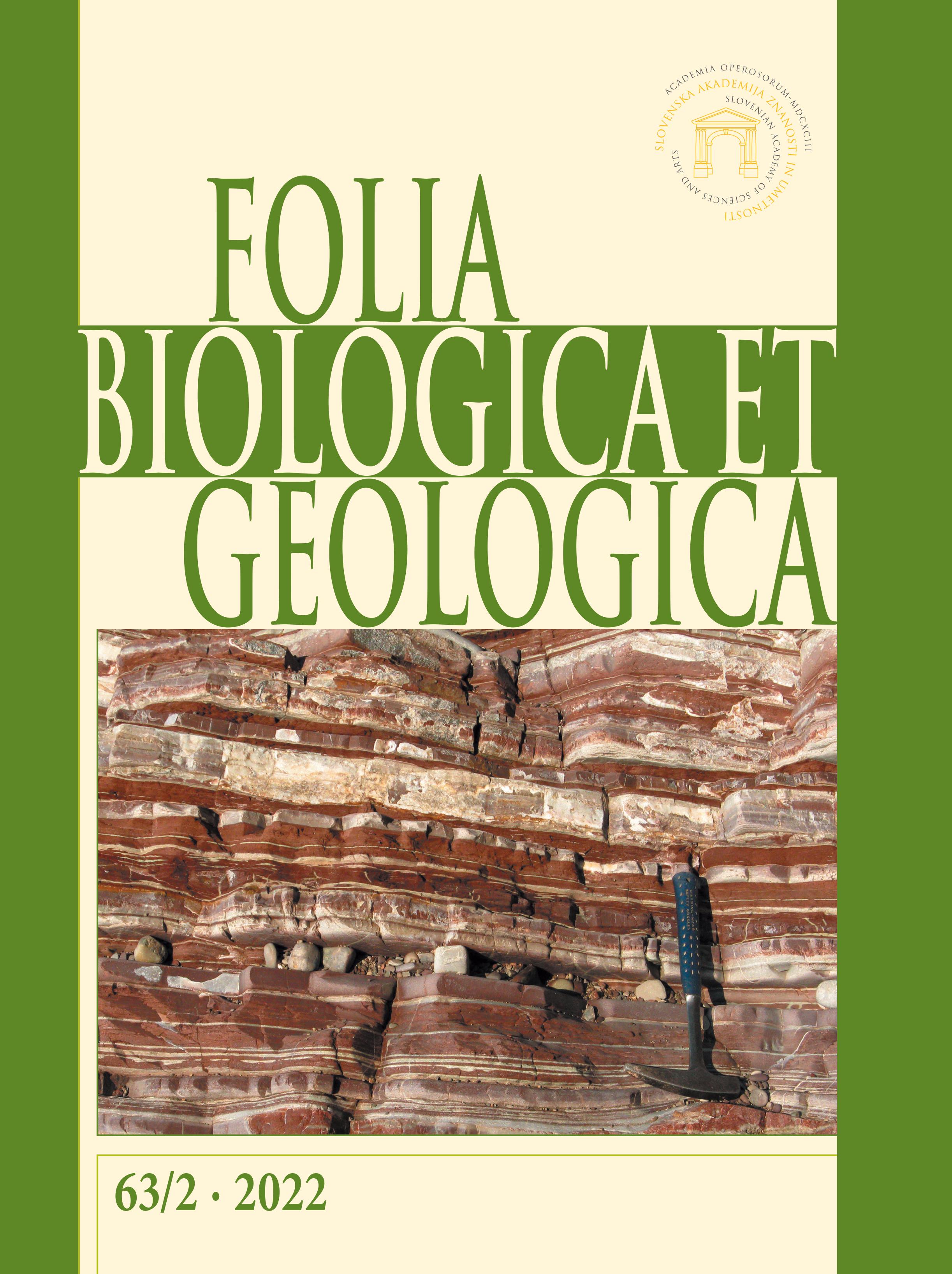Stratigraphy and structure of the Julian Alps in NW Slovenia / Stratigrafija in struktura Julijskih Alp v severozahodni Sloveniji
DOI:
https://doi.org/10.3986/fbg0098Abstract
The Julian Alps belong to the eastern Southern Alps where the South-Alpine and the Dinaric structures now overlap. In Mesozoic times, this area was part of the northeastern Adriatic continental margin, which was facing the Neotethys Ocean but was also close to the Alpine Tethys. The Mesozoic distribution of basins and swells on the continental margin determined variations in the stratigraphic record and also controlled the structural evolution of the later thrust belt. The most general tectonic subdivision in the Julian Alps is the distinction between the Tolmin nappes derived from the Slovenian Basin and the Julian nappes derived from the Julian High and its surroundings. This paper focuses on the Julian nappes. The Mesozoic stratigraphic record is linked with the available structural data to propose a robust subdivision in four nappes that were emplaced in the early Paleogene. From bottom to top these nappes and their corresponding paleotopographic units are: The Tamar Nappe (Tarvisio Basin), the Krn Nappe (western part of the Julian High) with the overlying Travnik Thrust Sheet (Bovec Basin), the Jelovica Nappe together with the Zlatna Klippe and the equivalent smaller klippen (eastern Julian High) and the Pokljuka Nappe (Bled Basin).
The second part of the paper deals with the description of field-trip stops. The panoramic view from the mountain ridge south of Lake Bohinj is presented to explain the general structure of the Julian Alps. The second half of the field-trip is devoted to the Jurassic and Cretaceous stratigraphy of the Bled Basin as the paleogeographically most internal unit with clear affinities with the central Dinarides.
Key words: Mesozoic, Cenozoic, Southern Alps, Dinarides, stratigraphy, nappe structure
IZVLEČEK
Julijske Alpe so del vzhodnih Južnih Alp, kjer se danes križajo južnoalpske in starejše dinarske strukture. V mezozoiku je bilo ozemlje del severovzhodnega kontinentalnega roba Jadranske plošče med Neotetido na vzhodu in Alpsko Tetido na zahodu. Razporeditev globokomorskih bazenov in relativno dvignjenih planot na mezozojskem kontinentalnem robu se odraža v raznolikem stratigrafskem zapisu, od mezozojskih prelomov in razlik v stratigrafskih zaporedjih pa je bil odvisen tudi nadaljnji strukturni razvoj ozemlja. Generalno so Julijske Alpe razdeljene na Tolminske in na Julijske pokrove. Stratigrafska zaporedja Tolminskih pokrovov so bila paleogeografsko del Slovenskega bazena, v Julijskih pokrovih pa so ohranjena zaporedja Julijskega praga in bazenov, ki so ga obkrožali. Poudarek članka je na Julijskih pokrovih. Na osnovi mezozojske stratigrafije in obstoječih strukturnih podatkov predlagamo grobo delitev Julijskih pokrovov na štiri pokrove iz Dinarskega faze narivanja, tako da vsakemu pokrovu ustreza določena mezozojska paleotopografska enota. Najnižji je Tamarski pokrov z zaporedji Trbiškega bazena. Sledi Krnski pokrov (zahodni del Julijskega praga) s Travniško lusko oziroma zaporedjem Bovškega bazena. Nad Krnskim pokrovom je Jelovški pokrov (vzhodni del Julijskega praga), ki mu pripadajo še Zlatenska plošča in nekaj manjših tektonskih krp. Strukturno najvišji je bil v paleogenu Pokljuški pokrov, sestavljen iz kamnin Blejskega bazena.
V drugem delu članka so opisane ogledne točke ekskurzije. Razgled z Vogla in Šije smo uporabili za razlago generalne strukture Julijskih Alp. Druga polovica ekskurzije je posvečena stratigrafiji jurskih in krednih plasti Blejskega bazena, ki je bil paleogeografsko relativno interna enota, po stratigrafiji primerljiva z enotami centralnih Dinaridov.
Ključne besede: mezozoik, kenozoik, Južne Alpe, Dinaridi, stratigrafija, pokrovna zgradba




